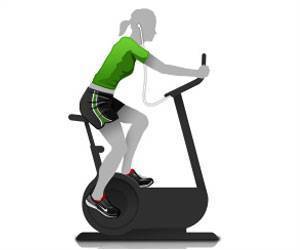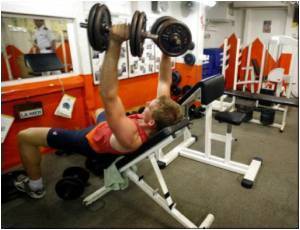A study of 9 and 10-year-olds finds that kids who are more aerobically fit have more fibrous and compact white-matter tracts in the brain than their peers who are less fit.

The team reports its findings in the open-access journal Frontiers in Human Neuroscience.
"Previous studies suggest that children with higher levels of aerobic fitness show greater brain volumes in gray-matter brain regions important for memory and learning," said University of Illinois postdoctoral researcher Laura Chaddock-Heyman, who conducted the study with kinesiology and community health professor Charles Hillman and psychology professor and Beckman Institute director Arthur Kramer. "Now for the first time we explored how aerobic fitness relates to white matter in children's brains."
The team used diffusion tensor imaging (DTI, also called diffusion MRI) to look at five white-matter tracts in the brains of the 24 participants. This method analyzes water diffusion into tissues. For white matter, less water diffusion means the tissue is more fibrous and compact, both desirable traits.
The researchers controlled for several variables – such as social and economic status, the timing of puberty, IQ, or a diagnosis of ADHD or other learning disabilities – that might have contributed to the reported fitness differences in the brain.
The analysis revealed significant fitness-related differences in the integrity of several white-matter tracts in the brain: the corpus callosum, which connects the brain's left and right hemispheres; the superior longitudinal fasciculus, a pair of structures that connect the frontal and parietal lobes; and the superior corona radiata, which connect the cerebral cortex to the brain stem.
Advertisement
The team did not test for cognitive differences in the children in this study, but previous work has demonstrated a link between improved aerobic fitness and gains in cognitive function on specific tasks and in academic settings.
Advertisement
To take the findings further, the team is now two years into a five-year randomized, controlled trial to determine whether white-matter tract integrity improves in children who begin a new physical fitness routine and maintain it over time. The researchers are looking for changes in aerobic fitness, brain structure and function, and genetic regulation.
"Prior work from our laboratories has demonstrated both short- and long-term differences in the relation of aerobic fitness to brain health and cognition," Hillman said. "However, our current randomized, controlled trial should provide the most comprehensive assessment of this relationship to date."
Source-Eurekalert














